How can technology help seniors aging in place?
The challenge of aging in place is to live safely and independently for as long as possible. Learn how technology can make a difference!

According to the Population Reference Bureau, there are 46 million people over the age of 65, and 20 million over the age of 75 in the US. Considering this number is going to increase in the next 20 to 30 years, age-friendly technologies and devices to help improve the experience of aging at home are necessary, now more than ever. Understandably, older adults are reluctant to let go of their homes, their memories and their independence. As a family member, you want to honor their desire to stay at home, but you also want them to be safe. How do you find an acceptable balance?
To cope with this trend of aging in place, there are the so-called “smart” devices, which are perfectly suited to independent aging adults. These devices are available to provide convenience, reliability and safety for seniors who live on their own or who have family caregivers who are remote. But more importantly, some of these devices can help you avoid the decision and expense of moving an aging family member to an assisted living facility.
But how do you identify the best piece of technology to help your aging loved ones?
Think about specific areas where they struggle. How can they be simplified or improved? What role can technology play? A single piece of technology could make all the difference!
Learn how you can bring technology into your parents’ home
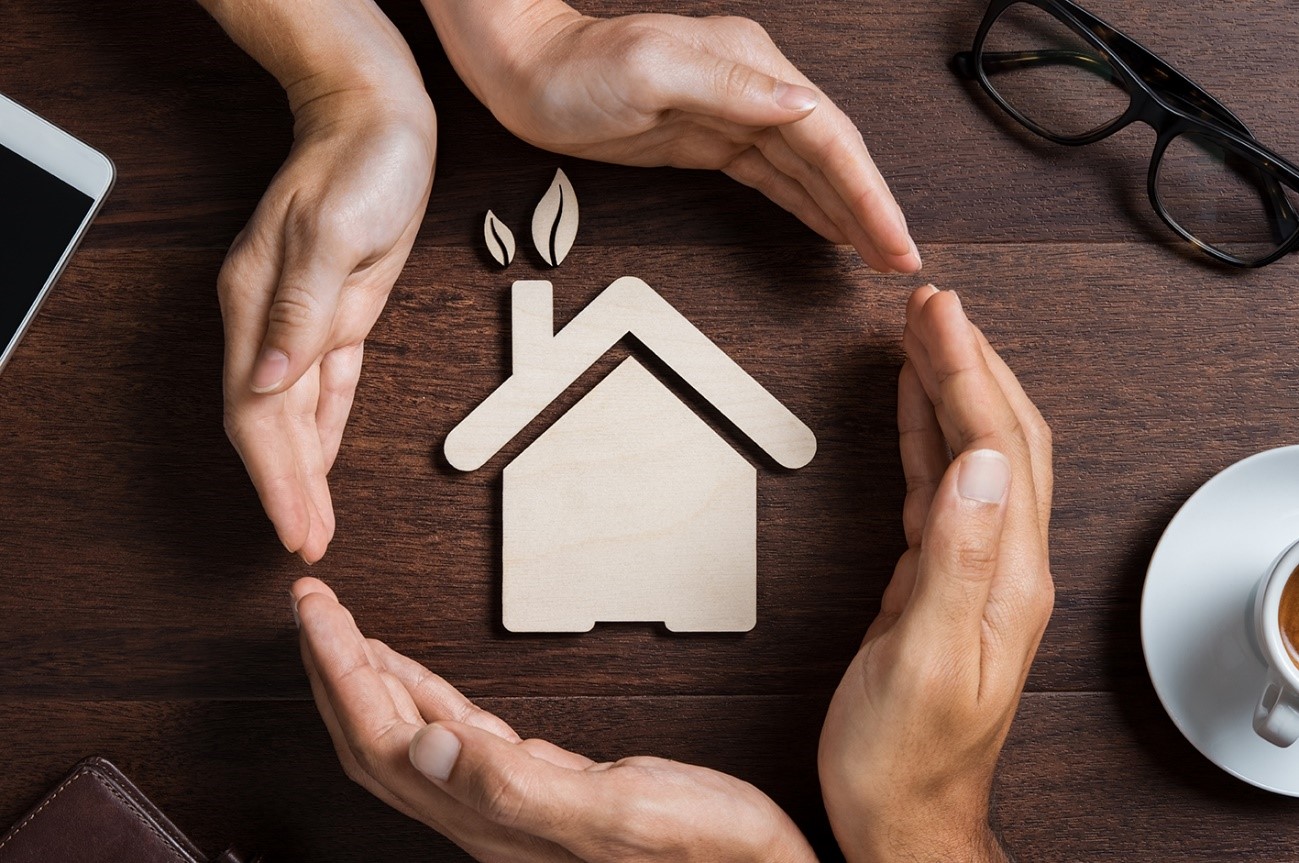
Technological knowledge is something that younger people, or the so-called millennials, take for granted. Many baby boomers are quite well acquainted with new technologies too. However, some of our elders may lack technological knowledge, regardless of all of their wisdom and life experience. Helping them with the basics could help them start using a variety of smart gadgets and, as a result, enhance their quality of life and safety at home.
Here are some basic examples to start with:
- Teach them how to use a smartphone, a tablet or even a computer – they are used to buttons, but touch screen systems can be even easier for them.
- Teach them how to connect to Wi-Fi and do a Google search – they will feel empowered to have all the info they need just a click away.
These are just the most basic foundations to get ready for the technological trends that will inevitably become more and more available to seniors. Just think how easy everything else will come after they learn these two steps.

When it comes to introducing your parent or relative to different gadgets and apps, a good idea is to ask your children to lend a hand. They are digital natives, so they are more experienced with technology and, typically, better at explaining it in simple words. Another factor in favor of this strategy is that the teaching may be better received when provided by a grandchild. Sometimes, parent-child dynamics can add more drama and tension to the situation.
If you run into resistance, remind them that it’s never too late! We just need to point them to the right resources, so that they can take advantage of helpful technology. After this introduction to the brave new world of the Internet and technology, your older relative will feel empowered and perhaps will wind up teaching you a thing or two!
So, how can we use technology to help as we age?

The demand for home automation technology is growing exponentially. Why? It’s all about making life a little simpler and less stressful; so one can enjoy retirement, without being too concerned about the aging process.
In fact, one way to slow the aging process is by embracing novelty. An open mind will recognize all the benefits technology can bring into our lives.
We refer to the 4 in 10 Americans, age 50-plus, that according to AARP, already own a tablet and are embracing digital technology. These seniors are discovering the benefits of incorporating helpful technology into their daily lives. Part of Stannah’s social mission is to fight against stigmas surrounding aging, so that seniors can live independently and with dignity. So, we’re very much in favor of seniors becoming more technologically aware.
Here are some of the main “aging in place” essentials, technological concepts and gadgets your elderly loved ones should be introduced to:
1# Make sure your parents have the right connectivity:
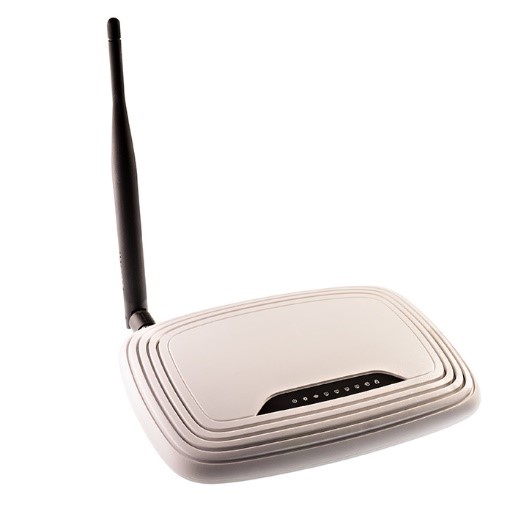
In the brave new world of the Internet, everything starts with the right connectivity. It is important to have an up-to-date router, not only to access the Internet, but to be compatible with the most recent protocols, as it will become the central hub that controls all of their devices and sensors.
2 # Touch-screen and voice-activated systems for seniors

Some senior users will have difficulty using the mouse and pointing it at the right location, because shaky hands make it hard for them to use the device’s small buttons. That is why touch-screen systems can be the best solution for them. Besides, touch-screens provide a more intuitive interaction between user and device.

Google Home: Smart Speaker & Home Assistant
Some of you may already know of Siri or Cortana for smartphones. But there’s a new generation of voice-first technology or “smart speakers”, used to answer questions, play music, read books aloud, interact with network-connected devices and offer scheduled alerts. If your elderly loved one enjoys reading, but has trouble reading a book due to poor eyesight, how would he or she feel about hearing it read aloud?
3# Engage with others with simplified computers
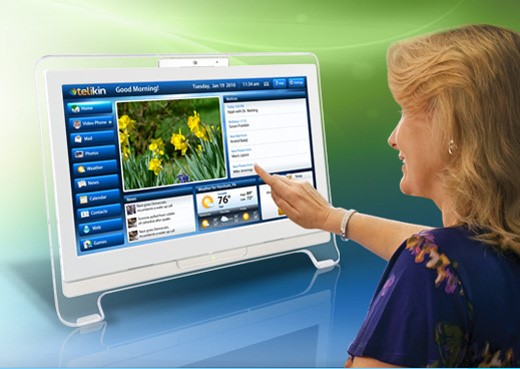
Telikin: simplified computers for seniors
The best computer for an elderly person should include touch-screen capabilities. The Telikin desktop computer has been on the market for a couple of years now and it is an excellent option. Apart from the 20’’ touch-screen, it includes a big button menu that displays your favorite functions on the screen at all times in order to provide instant access to the Web, email, games, video chat, photo sharing, news, weather and more!
4# Detecting and protecting with Home Monitoring Systems
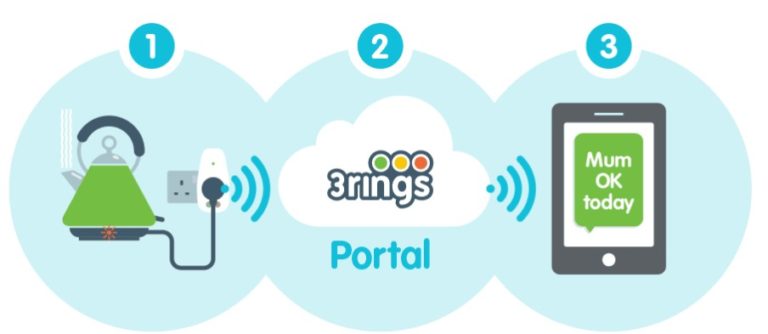
Home Monitoring Systems. Example from 3 Rings
Rather than calling your elderly loved one six times a day to check in, activity-based sensors around the home can discreetly let you know that they’re up and going about their daily life. If not, a remote family member, caregiver or emergency response service is alerted – via smartphone notification, email or text message — if the elderly person is doing, or not doing, something. It could detect if a senior hasn’t left their bedroom at the usual time or if they haven’t used the kettle, the microwave or any other device where the sensor is. There are several brands providing these kinds of home monitoring systems. Since they are so discreet, your elderly loved one won’t feel like they’re being monitored. Instead of calling to “check-in”, you can converse about more interesting things, as you already know they’re up and moving.
5# Sight and Sound Gadgets

Home safety phone for seniors, from Vtech
Advances in technology aimed at elders are made to help lower anxiety, boost self-esteem, and generally keep them more engaged and connected at home. They won’t feel anxious if they don’t hear the phone, for instance. In fact, there’s a variety of magnifying helpers that can be “illuminated” or “magnified”, either in size, colour and sound, that will make reading and viewing much easier for older eyes. Telephone amplifying devices allow older loved ones to carry on conversations without constantly asking people to repeat themselves, which, in turn, leads to more natural connection with friends and family. They’re also helpful for making error-free appointments with doctors.
6# Emergency pendants

Emergency pendant or wrist bracelet, from Life Link Response
Medic alert-like pendants can be worn around the wrist or neck. It includes an emergency button to be pressed in case of an emergency, such as after a fall. A call is immediately made to 911 and/or pre-programmed numbers of family members.
Features may vary between solutions, however, such as some that work outside, offer two-way voice support, or with a “fall detection” feature so loved ones are notified even if a senior isn’t able to press the button.
7# Video chatting:
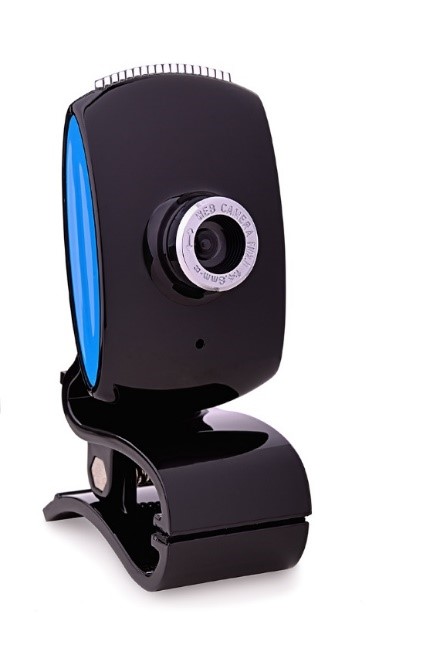
Encourage your parent to video call you, either from their smartphone or tablet. For example, your mom wouldn’t feel good about installing a webcam in her home, as it would be an invasion of her privacy. But through a video call, Skype or Facetime, you can easily check in and enjoy a virtual “face-to-face” conversation or meal with your parents. It is not only a great way to communicate with them, but it is also a way to check how they are doing, based on the way they look or act.
8# Automatic pill dispensers

It is most likely that our aging loved ones are on some sort of medication. Forgetting to take these medications can be a cause for concern. Even worse, they may take them twice. Another example of how technology can help elders is with “medication alarms” or “medication dispensers”, that manage the pill intake. One example is Hello, I’m Spencer, but there are different types of pill dispensers on the market, that suit different kinds of needs.

Medication Dispenser from Hello I’m Spencer
9# Thermostat Sensor

Smart Thermostat from Sensi
Regular thermostats can be confusing to program, and seniors with poor eyesight may not be able to adjust the settings easily. On the other hand, a connected device, like the one in the picture above is simple to program and adjust via smartphone, and even better, it can be synced for voice-controlled adjustments.
How technology can help seniors maintain health and wellness at home

Using a nutrition guide app, in the kitchen
Seniors – especially those who live alone – often have problems planning meals and getting the nutrition they need. Use technology to keep track of what they should be eating and when. Try: Simple Meal Reminder (for Android) or FoodRemindr (for Apple).
Fitness Tools
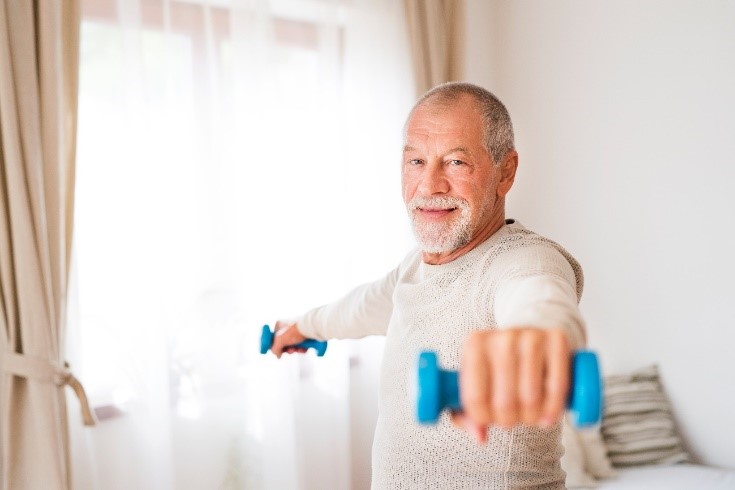
In a recent AARP survey, 77 % of participants aged 50-plus reported that fitness apps were useful. There is a huge variety of offers. No matter your fitness level, there’s an app for you. Here are some examples:
Brain Games

Brain Fitness Program, from Brain HQ
Just like the rest of the population, seniors need to keep their brains healthy. Encourage them to play games like Sudoku or crosswords or invest in more advanced programs. Try: Brain Fitness Program.
Robotic Vacuum cleaner

If your elderly loved ones are not as mobile as they once were, robot vacuum cleaners are a fun way to clean the floor at the touch of a button. Particularly, if a senior has rheumatoid arthritis. Also, these vacuum cleaners are well equipped to clean up pet hair.
A stairlift for fall prevention
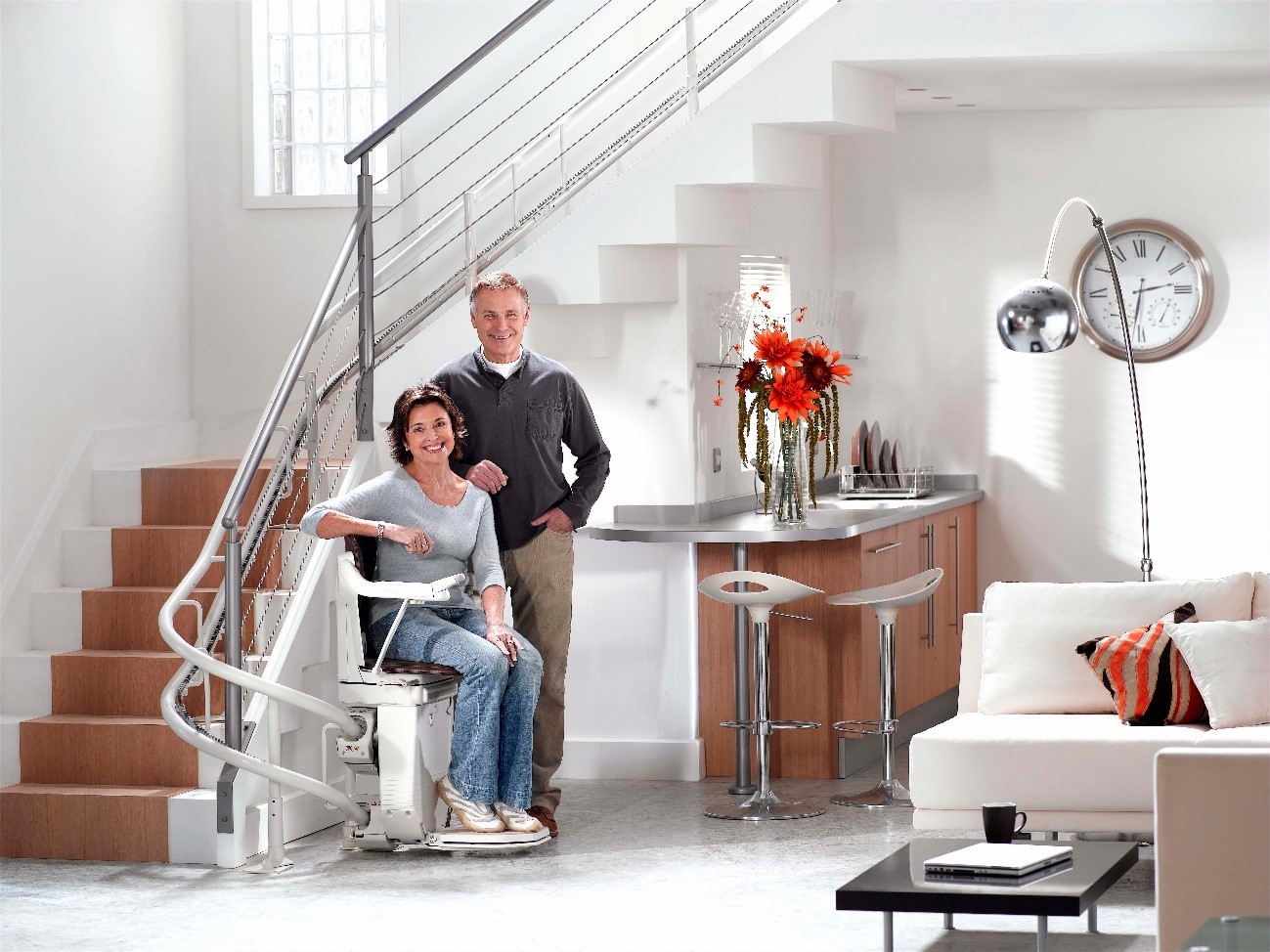
Latest technology on stairlifts, by Stannah
If you’re concerned about your parent falling or expending too much energy while climbing the stairs, installing a stairlift in their home might be the best decision. If your elderly loved one is dealing with heart ailments, rheumatoid arthritis or other mobility issues, a stairlift could drastically reduce the strain. There are a variety of stairlift options to consider, from choosing between a straight or curved staircase, to renting vs. buying. For those who want to get to the second floor so that they can continue living in their beloved home, installing a stairlift makes a difference to their quality of life and provides peace of mind.
Aging in place tech: fostering independence

The growing trend for aging in place can be supported by smart home technology, where simplicity is king! So, there’s no doubt that advancing technology will improve aging lives. However, availability, democratization, adoption and integration will take time. And we believe all ages have a stake in this, although the true beneficiaries of these advances may well be the aging generations to come. In the meantime, as concerns about the impacts of technology weigh on some, we should celebrate technology’s potential to empower older adults to live a long bright future.
While you can serve as a guide for your aging family member, it is very important to give them a choice, as it will help them feel in control. Be mindful about involving them in the conversation and decision-making process, rather than forcing new technology on them.
But be persistent. Take the time to explain how each new technology can allow them to stay safe at home. Ultimately, it’s about being there for them and supporting their desire to remain at home, as they age. Technology is only part of the picture, but it can be a huge help and provide relief for aging seniors and their family members.

 USA
USA